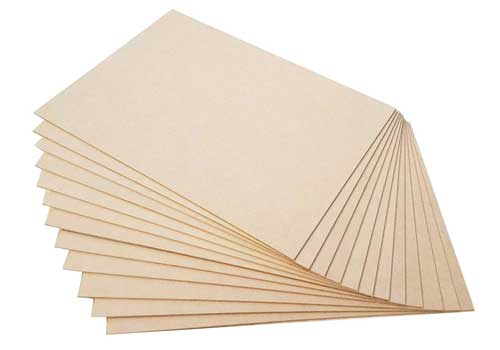MDF vs Plywood; which should you choose for your project?
MDF (Medium Density Fibreboard) is an engineered material made by breaking down hardwood or softwood residuals into fine particles, combining it with wax and a resin binder and applying high temperature and pressure.
Advantages of MDF
- MDF is generally cheaper than plywood.
- The surface of MDF is very smooth which makes it a great surface for painting.
- MDF is very consistent throughout, so cut edges appear smooth and won’t have voids or splinters.
- Because of the smooth edges, you can use a router to create decorative edges.
- The consistency and smoothness of MDF allow for easy cutting of detailed designs (such as scrolled or scalloped designs) using a scroll saw, band saw or jigsaw.
Disadvantages of MDF
- Just like particle board, MDF will soak up water and other liquids like a sponge and swell unless it’s very well sealed on all sides and edges.
- Because it consists of such fine particles, MDF doesn’t hold screws very well.
- Because it’s so dense, MDF is very heavy which can make it more difficult to work with.
- MDF can’t be stained. Not only does it soak up stain like a sponge but because there’s no wood grain on MDF, it looks awful when it’s stained.
- MDF contains VOCs (eg. urea-formaldehyde) so care needs to be taken while cutting and sanding to avoid inhalation of the particles.
Plywood
Plywood is also an engineered wood product, made by pressing and binding sheets of wood veneer together into one solid piece. Like MDF, plywood comes not only in different thicknesses but also in different grades, so you can choose the right one for your project.
Lower grades are used in the construction of houses. The higher grades of plywood (stain grade, cabinet grade, etc.) are much prettier and smoother.
Unlike MDF, they have consistent wood grain showing and generally lack knot holes and other major imperfections. You can also find veneered plywoods in various wood species (Oak, Sapele or Ash for example) so you can get the exact look you want for your project.
Advantages of plywood
- Made from multiple layers of wood veneer, plywood is a very strong material to work with.
- It won’t soak up water and liquids as quickly or easily as MDF does so it’s less susceptible to water damage.
- Because it carries a grain, plywood is stainable. Which makes it perfect for kitchen cabinets, tabletops and other projects where you want a large stained wood surface.
- It holds screws very tightly since the varying grains of wood on each layer give the screws something to hold onto.
Disadvantages of plywood
- Plywood is more expensive than MDF and of course, the higher the grade and depending on the species of wood, it can increase in price.
- Because of the layers that show on the edge, plywood needs finishing with iron-on edge banding, pieces of timber or decorative mouldings.
- It’s harder to get a perfectly smooth cut with plywood than it is with MDF.
- It’s more difficult to cut detailed designs into plywood (scrolled, scalloped, etc.) because the edges will splinter and the edges that show layers may have voids in some places.
So, which one should you use?
Because MDF doesn’t handle moisture very well, it is more suited for indoor use such as in furniture. Also due to its non-directional grain structure, MDF is ideal for cutting, machining and drilling without splinters or chipping.
The smooth surface makes it a good choice for simple interior design pieces that will be painted, cabinets, shelving, mouldings etc.

